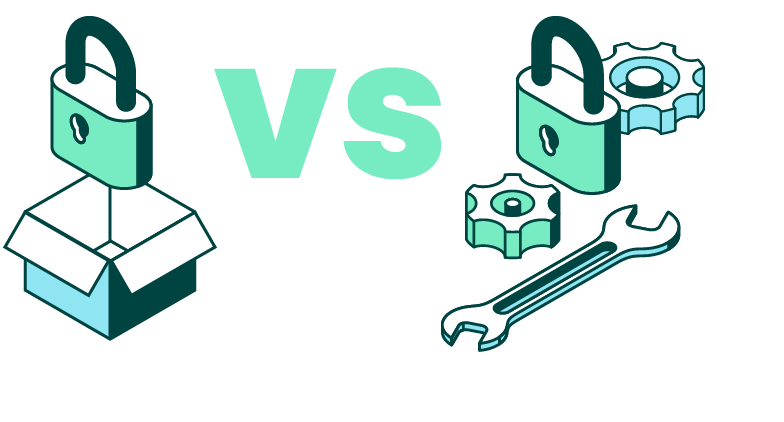What is Click and Launch?
Click and Launch are pre-built security awareness training bundles designed to maximize your return on investment while minimizing the time your organization spends implementing a training program. Each bundle is budget-friendly and can be up and running in just a few clicks.
How is Click and Launch Different?
Unlike other security awareness training options, Click and Launch empowers security leaders to build cyber threat resilience without sacrificing quality. All course and phishing simulation content is vetted by in-house subject matters experts, giving your employees powerful out-of-the-box training on phishing, social engineering, ransomware, and more.
Who is Click and Launch For?
Click and Launch is for any organization looking for multifaceted security awareness training that’s easy to use and quick to implement. By investing as little as five minutes of your time in the initial setup, you can better secure sensitive information with programs that leverage over 20 years of cyber security expertise.
How Click and Launch Boosts Your Awareness Training Productivity
Click and Launch is the security awareness training solution for organizations craving affordable, stress-free security awareness training. These bundles deliver proven behavior change results through informative courses, real-world phishing simulation, and various reinforcement tools – and it’s all ready for you to launch instantly!
 Get Set Up Quickly
Get Set Up Quickly
Create and launch pre-configured training campaigns and phishing simulations in just a few clicks.
 Easy-To-Use Interface
Easy-To-Use Interface
Implement your security awareness training with confidence using a straightforward UI.
 Ready-To-Use Content
Ready-To-Use Content
Take a proactive training approach with courses and campaigns ready to deploy immediately.
 Vetted By Experts
Vetted By Experts
Fortra's CISO experts vet all content to deliver reliable, insightful best practices.
 Engaging Reinforcement Tools
Engaging Reinforcement Tools
Keep key topics top-of-mind with newsletters, infographics, and other ready-made communication tools.
 Achieve Your Goals
Achieve Your Goals
Enjoy a learning experience that empowers your organization to attain its cyber security objectives.
 Powerful Phishing Campaigns
Powerful Phishing Campaigns
Train your end users on the latest tactics cyber criminals use with real-world phishing simulations built into each bundle.
Ready to Save Time and Money?
Book your personalized walkthrough now!
Out-Of-The-Box Vs. Customizable Security Awareness Training: Which One is Better?
 Your organization’s cyber security needs and goals are unique. While ransomware and phishing are risks for many, no two organizations have the same IT resources or internal security awareness levels. Because of this, training programs must be designed with those particulars in mind to reduce risk and strengthen information security.
Your organization’s cyber security needs and goals are unique. While ransomware and phishing are risks for many, no two organizations have the same IT resources or internal security awareness levels. Because of this, training programs must be designed with those particulars in mind to reduce risk and strengthen information security.
Thankfully, there are plenty of options at every organization’s disposal, from pre-built bundles like Click and Launch that further streamline training implementation to more customizable security awareness solutions. By choosing one over the other, it’s important to know what you can expect.
Before You Start: Identify Your Organization’s Needs
Prior to selecting a security awareness training program or bundle type, you must first determine your organization’s cyber security goals and the resources at its disposal. This decision-making process is the most significant factor when predicting a training program’s success rate.
Some questions security leaders can ask during this stage include:
- What end user behaviors are you trying to change through your training campaign(s)?
- Which cyber threats are most prevalent in your industry or region?
- What risk reduction or metric-based improvement do you want to see over time?
- When will training courses and phishing simulations be sent to end users?
- Which objectives must be met for the training program to succeed?
While this list of questions isn’t exhaustive, they underscore that having some form of security awareness training in place is always better than having none at all.
